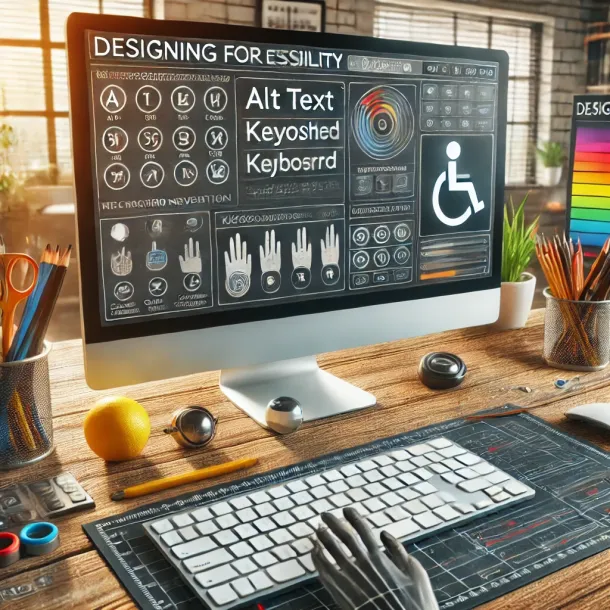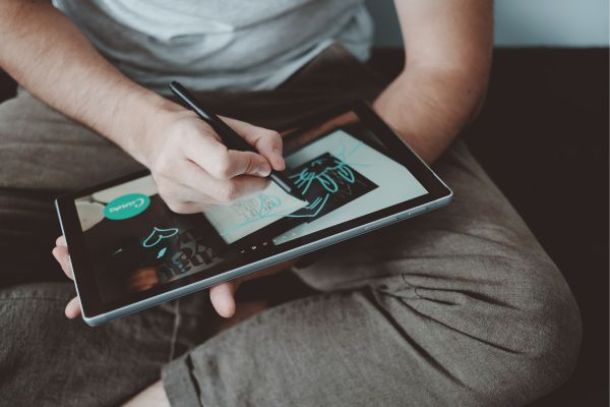The Importance of Prototyping in Product Design
The Importance of Prototyping in Product Design
In the dynamic world of product design, where innovation and functionality are key, prototyping has emerged as an essential step in the development process. A prototype serves as a preliminary version of a product, allowing designers, engineers, and stakeholders to explore ideas, test functionalities, and refine concepts before moving into full-scale production. By facilitating early feedback and iteration, prototyping plays a pivotal role in ensuring that the final product not only meets the intended design criteria but also resonates with the target audience.
Understanding the Role of Prototyping
Prototyping in product design is more than just an optional phase—it’s a critical component of the design process that bridges the gap between concept and reality. The primary purpose of a prototype is to create a tangible representation of a product idea, enabling designers and engineers to visualize, test, and refine their concepts. This process helps in identifying potential issues, assessing feasibility, and ensuring that the design aligns with user needs and market demands.
One of the key benefits of prototyping is that it allows for early detection of design flaws. By creating a physical or digital model of the product, designers can evaluate how the product functions in real-world scenarios. This early testing phase is crucial for uncovering problems that might not be apparent during the initial design stages. Addressing these issues early on saves time and resources, preventing costly revisions later in the development process.
Moreover, prototyping fosters collaboration among different teams involved in product development. Engineers, designers, marketers, and other stakeholders can work together more effectively when they have a prototype to discuss and analyze. This collaborative approach ensures that everyone is on the same page and that the final product reflects a unified vision.
Types of Prototyping
There are several types of prototyping, each serving different purposes depending on the stage of development and the specific goals of the project. Understanding these different types can help designers choose the most appropriate method for their needs.
Low-Fidelity Prototypes
These are often simple, rough versions of the product that are used to explore ideas quickly and inexpensively. Low-fidelity prototypes can include sketches, paper models, or basic digital wireframes. The goal at this stage is to brainstorm and iterate on different concepts without getting bogged down by details.
High-Fidelity Prototypes
These prototypes are more detailed and closer to the final product. They can be fully functional models that mimic the appearance, functionality, and user interface of the intended product. High-fidelity prototypes are often used for usability testing and presentations to stakeholders, as they provide a more realistic representation of the final design.
Digital Prototypes
With advancements in technology, digital prototyping has become increasingly popular. Tools like CAD software and 3D modeling allow designers to create virtual prototypes that can be tested and modified in a digital environment. Digital prototypes are particularly useful for products with complex geometries or those that require extensive testing before physical production.
Physical Prototypes
Physical prototypes are tangible models of the product, often created using materials like foam, plastic, or metal. These prototypes are crucial for testing the physical properties of a product, such as weight, balance, and durability. Physical prototyping is often used in industries like automotive, aerospace, and consumer electronics, where the tactile experience is essential.
The Prototyping Process: From Concept to Reality
The process of prototyping typically follows a structured approach, starting from the initial concept and evolving through multiple iterations until the final design is achieved. This iterative process is essential for refining ideas and ensuring that the product meets all requirements.
Conceptualization
The first step in the prototyping process is conceptualization, where the initial ideas are generated. This stage involves brainstorming, sketching, and discussing various concepts to identify the most promising ones. The goal is to explore different possibilities and select a concept that aligns with the project’s objectives.
Design and Development
Once a concept has been chosen, the next step is to create a detailed design. This involves developing technical drawings, 3D models, and other design documentation. During this phase, designers consider factors such as materials, manufacturing processes, and user experience. The design is then translated into a prototype, either digital or physical, depending on the project’s needs.
Testing and Evaluation
After the prototype is created, it undergoes rigorous testing to evaluate its functionality, usability, and performance. This stage is critical for identifying any issues or areas for improvement. Testing can involve user feedback sessions, stress tests, and simulations to ensure that the prototype meets all design criteria.
Iteration and Refinement
Based on the feedback and testing results, the prototype is refined through multiple iterations. Each iteration involves making adjustments to the design and re-testing the prototype. This process continues until the prototype meets all the desired specifications and is ready for production.
Finalization and Production
Once the prototype has been perfected, the final step is to prepare for production. This involves creating detailed manufacturing plans, sourcing materials, and setting up the production process. The prototype serves as the blueprint for the final product, ensuring that what is produced matches the design vision.
The Benefits of Prototyping in Product Design
Prototyping offers numerous benefits that contribute to the overall success of product design. By allowing designers to explore ideas, test functionality, and gather feedback, prototyping ensures that the final product is well-designed, user-friendly, and market-ready.
Early Detection of Issues
Prototyping allows for the identification of design flaws early in the process, saving time and resources. By testing and refining the prototype, designers can address potential problems before they become costly issues in the final product.
Enhanced Collaboration
Prototyping fosters collaboration among cross-functional teams. By providing a tangible representation of the product, prototypes facilitate communication and alignment between designers, engineers, marketers, and other stakeholders.
Improved User Experience
Prototyping helps ensure that the product meets user needs and expectations. By involving users in the testing process, designers can gather valuable feedback and make adjustments to improve the overall user experience.
Cost Efficiency
While prototyping does require an investment of time and resources, it ultimately saves money by preventing costly revisions later in the development process. By refining the design through prototyping, companies can avoid the expense of reworking a product that has already been manufactured.
Innovation and Creativity
Prototyping encourages experimentation and creativity. By allowing designers to explore different ideas and test new concepts, prototyping fosters innovation and leads to more creative and effective product designs.
Challenges and Considerations in Prototyping
Despite its many benefits, prototyping is not without its challenges. Designers must consider various factors to ensure that the prototyping process is effective and efficient.
Time and Resource Constraints
Prototyping can be time-consuming and resource-intensive, particularly for complex products. Designers must balance the need for thorough testing and refinement with the constraints of project timelines and budgets.
Technical Limitations
Some prototypes may not fully replicate the functionality or appearance of the final product, particularly in the early stages of development. Designers must be aware of these limitations and ensure that stakeholders understand the differences between the prototype and the final product.
User Feedback
While user feedback is invaluable, it can sometimes be challenging to interpret and integrate into the design. Designers must carefully consider user input and balance it with other design considerations to create a product that meets all requirements.
Iteration Fatigue
The iterative nature of prototyping can lead to “iteration fatigue,” where designers and stakeholders become overwhelmed by the constant cycle of testing and refinement. It’s important to manage this process effectively to maintain motivation and focus.
The Future of Prototyping in Product Design
As technology continues to advance, the future of prototyping in product design looks promising. Emerging technologies such as 3D printing, virtual reality (VR), and artificial intelligence (AI) are revolutionizing the way prototypes are created and tested.
3D Printing
3D printing has already had a significant impact on prototyping, allowing designers to create physical prototypes quickly and cost-effectively. As 3D printing technology continues to evolve, it will become even more accessible and versatile, enabling more complex and detailed prototypes.
Virtual Reality (VR)
VR offers a new dimension to prototyping, allowing designers to create immersive, interactive prototypes that can be experienced in a virtual environment. This technology enables more accurate testing of user interactions and can simulate real-world scenarios that would be difficult or expensive to replicate physically.
Artificial Intelligence (AI)
AI is poised to play a significant role in the future of prototyping. By analyzing vast amounts of data, AI can help designers predict potential issues, optimize designs, and even generate new ideas. AI-driven tools will streamline the prototyping process, making it faster and more efficient.
Sustainability
As the focus on sustainability grows, prototyping will play a crucial role in developing eco-friendly products. Designers will increasingly use prototypes to explore sustainable materials, test energy-efficient designs, and minimize waste in the production process.
Embracing Prototyping for Successful Product Design
Prototyping is an indispensable tool in the product design process, offering numerous benefits that lead to better, more user-friendly products. By allowing designers to explore ideas, test functionality, and gather feedback, prototyping ensures that the final product is well-designed, user-friendly, and market-ready.
As technology continues to advance, the prototyping process will only become more integral to product design. By embracing new tools and methodologies, designers can create innovative, high-quality products that meet the needs of users and stand out in the marketplace.
Whether through traditional physical models or cutting-edge digital simulations, prototyping remains a key factor in the success of product design. By investing in a robust prototyping process, companies can ensure that their products are not only functional and appealing but also capable of making a lasting impact on their industry.


